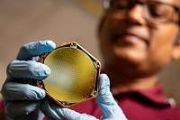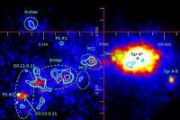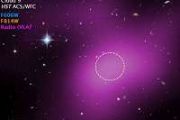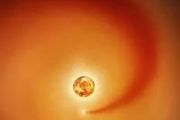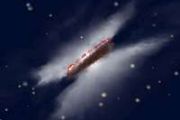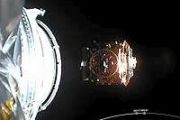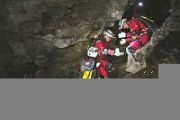
Copernical Team
How NASA's Lunar Trailblazer Will Chart a Unique Path to the Moon
 NASA's Lunar Trailblazer has arrived in Florida for final preparations ahead of its upcoming launch later this month. The small satellite, built by Lockheed Martin Space in Littleton, Colorado, has been integrated with a SpaceX Falcon 9 rocket. It will fly as part of Intuitive Machines' IM-2 mission under NASA's Commercial Lunar Payload Services (CLPS) initiative, with liftoff planned no earlier
NASA's Lunar Trailblazer has arrived in Florida for final preparations ahead of its upcoming launch later this month. The small satellite, built by Lockheed Martin Space in Littleton, Colorado, has been integrated with a SpaceX Falcon 9 rocket. It will fly as part of Intuitive Machines' IM-2 mission under NASA's Commercial Lunar Payload Services (CLPS) initiative, with liftoff planned no earlier NASA Advances Lunar Exploration with Polar Ice Mining Experiment
 NASA's Polar Resources Ice Mining Experiment-1 (PRIME-1) is set to probe the Moon's subsurface, analyzing its composition and potential resources to support future lunar exploration. As part of the Artemis campaign, PRIME-1 will assess the Moon's soil and environmental conditions to aid in developing sustainable human presence on the lunar surface.
The mission consists of two key instrumen
NASA's Polar Resources Ice Mining Experiment-1 (PRIME-1) is set to probe the Moon's subsurface, analyzing its composition and potential resources to support future lunar exploration. As part of the Artemis campaign, PRIME-1 will assess the Moon's soil and environmental conditions to aid in developing sustainable human presence on the lunar surface.
The mission consists of two key instrumen Lunar Space Station Module Prepares for US Transport Ahead of Artemis IV
 A key component of NASA's Gateway lunar space station has completed rigorous environmental tests and is now in the cleanroom for final preparations before its journey to the United States.
When Artemis IV astronauts travel to the Moon, they will be the first to visit Gateway, a space station orbiting the Moon designed to support human exploration and scientific research. Currently, the Hab
A key component of NASA's Gateway lunar space station has completed rigorous environmental tests and is now in the cleanroom for final preparations before its journey to the United States.
When Artemis IV astronauts travel to the Moon, they will be the first to visit Gateway, a space station orbiting the Moon designed to support human exploration and scientific research. Currently, the Hab Long March 8A Rocket Successfully Completes Maiden Flight
 China has successfully launched its Long March 8A carrier rocket for the first time, sending a group of satellites into orbit, China Aerospace Science and Technology Corp (CASC) announced.
The rocket lifted off at 5:30 p.m. from the Wenchang Space Launch Site in Hainan province, delivering the second batch of low-orbit satellites for China's State-owned internet network into their designat
China has successfully launched its Long March 8A carrier rocket for the first time, sending a group of satellites into orbit, China Aerospace Science and Technology Corp (CASC) announced.
The rocket lifted off at 5:30 p.m. from the Wenchang Space Launch Site in Hainan province, delivering the second batch of low-orbit satellites for China's State-owned internet network into their designat Sierra Space Successfully Concludes Testing of VR35K-A Upper Stage Engine
 Sierra Space, a pioneering force in commercial space and defense technology, has completed the test campaign for its fully integrated VR35K-A upper stage engine. Conducted at the Air Force Research Laboratory's (AFRL) Rocket Propulsion Division at Edwards Air Force Base in California, this milestone underscores the company's progress in developing next-generation propulsion systems.
The co
Sierra Space, a pioneering force in commercial space and defense technology, has completed the test campaign for its fully integrated VR35K-A upper stage engine. Conducted at the Air Force Research Laboratory's (AFRL) Rocket Propulsion Division at Edwards Air Force Base in California, this milestone underscores the company's progress in developing next-generation propulsion systems.
The co Super-precise satellite time synchronization achieves picosecond accuracy
 A cutting-edge carrier-phase-based approach to satellite-ground time synchronization has reached an unprecedented level of precision, achieving picosecond-level accuracy. This breakthrough stands to redefine global navigation, deep space exploration, and high-precision scientific research by effectively mitigating errors such as motion delays, relativistic distortions, and atmospheric disturbanc
A cutting-edge carrier-phase-based approach to satellite-ground time synchronization has reached an unprecedented level of precision, achieving picosecond-level accuracy. This breakthrough stands to redefine global navigation, deep space exploration, and high-precision scientific research by effectively mitigating errors such as motion delays, relativistic distortions, and atmospheric disturbanc First astronaut with a disability cleared for space station mission
 The first-ever astronaut with a physical disability has been cleared for a mission onboard the International Space Station, the European Space Agency announced on Friday.
John McFall, a 43-year-old British surgeon and former Paralympian who lost a leg in a motorbike accident when he was 19, said he was "hugely proud" of clearing the hurdle.
Since announcing McFall as a member of its astr
The first-ever astronaut with a physical disability has been cleared for a mission onboard the International Space Station, the European Space Agency announced on Friday.
John McFall, a 43-year-old British surgeon and former Paralympian who lost a leg in a motorbike accident when he was 19, said he was "hugely proud" of clearing the hurdle.
Since announcing McFall as a member of its astr SpaceX's workhorse Falcon 9 booster launches 21 Starlink satellites from Florida
 SpaceX early Saturday launched another 21 Starlink satellites aboard a record-setting Falcon 9 first-stage booster from Canaveral Space Force Station in Florida.
Liftoff was at 1:14 a.m. from pad 40 with clouds obscuring the rocket.
It was the 27th time this first-stage booster was used. It landed eight later at SpaceX droneship A Shortfall of Gravitas. This was the 98th booster
SpaceX early Saturday launched another 21 Starlink satellites aboard a record-setting Falcon 9 first-stage booster from Canaveral Space Force Station in Florida.
Liftoff was at 1:14 a.m. from pad 40 with clouds obscuring the rocket.
It was the 27th time this first-stage booster was used. It landed eight later at SpaceX droneship A Shortfall of Gravitas. This was the 98th booster NASA: 1.6% chance newly discovered asteroid will impact Earth in 2032
 NASA's Jet Propulsion Laboratory has declared a 1.6% chance that a large asteroid would strike the Earth on Dec. 22, 2032.
Scientists at NASA and the European Space Agency are among those closely watching the asteroid that measures between 130 and 300 feet in diameter and whose trajectory gives it a slight chance of impacting Earth in late 2032, the ESA reported Monday.
"An aster
NASA's Jet Propulsion Laboratory has declared a 1.6% chance that a large asteroid would strike the Earth on Dec. 22, 2032.
Scientists at NASA and the European Space Agency are among those closely watching the asteroid that measures between 130 and 300 feet in diameter and whose trajectory gives it a slight chance of impacting Earth in late 2032, the ESA reported Monday.
"An aster ESA's HydRON project for space-based optical communications moves forward
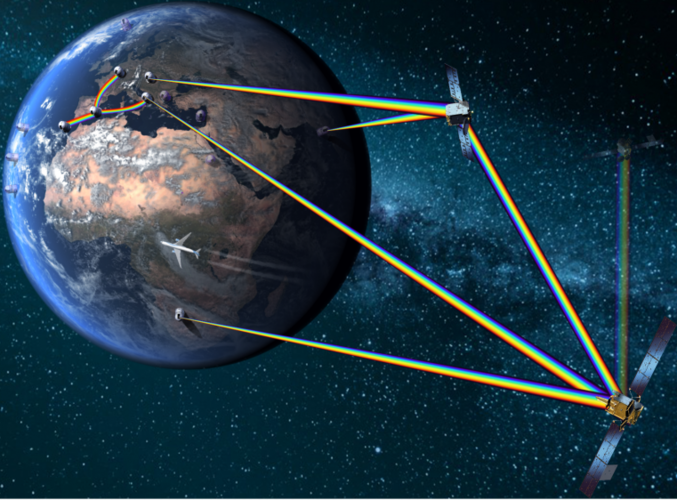
The European Space Agency (ESA) has jointly signed a contract with Thales Alenia Space to develop Element #2 of its High-throughput Digital and Optical Network (HydRON), an advanced laser-based satellite system that will transform the way we communicate in space. This phase will establish a satellite collector in low Earth orbit (LEO), capable of connecting different orbital layers using cutting-edge optical technology.



